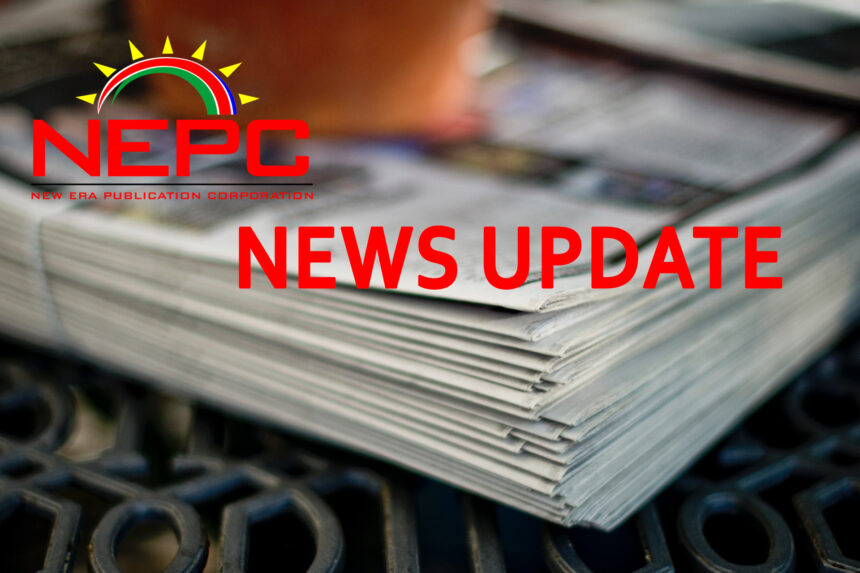KATIMA MULILO – The Zambezi region continues to be the commercial, trade and travel hub in north-eastern Namibia.
In 1992 when the regional council was established, Zambezi was predominantly a rural region with only 20% of the people living in urban areas with limited resources, compared to approximately 50 000 people currently living in urban areas.
The recently-released preliminary
census figures show that Zambezi has recorded 142 373 inhabitants.
Zambezi’s chief regional officer (CRO) Regina Ndopu-Lubinda explained how far the regional council has come in terms of development and service delivery to its inhabitants over the years.
“Zambezi only had one town, which is Katima Mulilo, with eight extensions, which could accommodate approximately 10 000 people with two informal settlements. However, the town today has grown significantly, with Katima Mulilo having 36 extensions, and Chotto having eight extensions accommodating many people,” she indicated.
She highlighted some of the priorities undertaken by the Zambezi Regional Council in taking services closer to the people.
These include the construction of roads, supplying potable water, and the electrification of schools in the rural areas of the Zambezi region. She proudly reported that the region has a total of 119 schools, of which 111 are public and eight private institutions. Equally, the region has managed to construct eight government hostels and eight community hostels, with school- feeding programmes in all junior primary schools.
Government has electrified 109 schools, 26 primary healthcare clinics, and three health centres here. Other notable government infrastructure include the state-of-the-art Zambezi Regional Council headquarters, which boasts eight constituency offices; the Ministry of Agriculture, Water and Land Reform’s regional headquarters with 16 agricultural development centres (ADCs); the Namibian Police’s regional headquarters, and several police posts and State House offices at Impalila Island. Ndopu-Lubinda, however, lamented the slow decentralisation of government functions to the regional council.
Besides the setbacks, the government has provided solar and diesel-driven water technologies as well as pipelined water (Katima-Sibbinda line, Kongola-Makanga line, Katima-Linyanti line, Katima-Bukalo line), including the drilling and installation of 647 boreholes throughout the region.
“This excludes boreholes drilled by conservancies in different communities. Therefore, 86% of the Zambezi community has safe drinking water,” she noted.
Ndopu-Lubinda stated that government has additionally extended the rural electrification grid to most government infrastructures within the region, leaving only 10 schools not connected to the electrical reticulation thus far. “Therefore, 90% of the Zambezi government infrastructure is connected to the main grid,” she added.
On the roads network, connectivity has improved, with certain roads being upgraded to bitumen standards (MR125 – Kongola, Sangwali, Linyanyi, Liselo and Kongola-Kamenga), (DR3508 – Namalubi, Isize, Luhonono). The government has also improved roads at Impalila Island.
To date, the Zambezi region has a total MTC network coverage of about 80% and the provision of police sub-stations in remote areas. “An improvement of 30% of sewerage reticulation exists in the urban areas of Katima Mulilo and Bukalo, whereby the government has provided funding for the re-routing of sewer in 2021 for Katima Mulilo. One township in Katima Mulilo is fully-connected, while the other is only 10% connected. Bukalo, being a newly- proclaimed village council, has full sewerage connection to households, with the exception of the Shack Dwellers informal settlement. This is in addition to the provision of the rural sanitation programme,” she briefed. Council is also involved with community programmes, and some that have been embarked upon to uplift the livelihood of residents. She said the government has initiated several programmes, including micro-finance projects, constituency development funds, cash or food-for-work, one region-one initiative, food security and nutrition, governor’s fund, conservancies’ support and traditional authority initiatives to uplift livelihoods.
Other projects include welding, construction of sub-khutas, tailoring, bee harvesting, kindergartens and brickmaking.
Moreover, she highlighted some of the challenges faced by the Zambezi Regional Council, which could hamper service delivery. Limited funding for health services, particularly towards upgrading the Katima Mulilo District Hospital to an intermediate or referral hospital, is one such challenge.
Limited funding towards sewers, roads and electrical connectivity to households as rural electrification policy targets government property and entities, community projects and water provision, are the others.
Other pressing issues include urban decay and lack of radio or television communication signals in western Zambezi, where the San-speaking communities largely reside.
“Despite water provision, some areas face alkaline (saline) water from boreholes,” she noted. The region also observed a depletion of natural resources such as fish and Devil’s Claw, which are harvested in an unsustainable manner. Another challenge is that people continue to walk long distances to access education, health and civic facilities.
Ndopu-Lubinda has a vision for Zambezi in terms of service delivery excellence.
She wishes to plan the socio-economic, physical and infrastructural development of the region to become prosperous, developed through value-addition and good governance.
On independence celebrations, she said the Zambezi Regional Council stands with the standing theme of “A People United for Prosperity”.
“Based on the fact that this will be the first-ever Independence celebration in the Zambezi region, let us salute the nation. We pledge that the labour of our past heroes and heroines shall not be in vain. We feel proud to be part of this prosperous nation,” Ndopu-Lubinda remarked.
The Zambezi Regional Council indicated readiness to host about 10 000 people at the Katima Mulilo Sports Complex.
The region is set to host the 34th Independence Day celebration for the first time since independence, with governor Lawrence Sampofu saying they are looking forward to hosting the guests.
The environment ministry has provided
15 kudus, 15 buffaloes and other meat. Meatco also pledged to slaughter about 15 cattle as
well.
However, accommodation is a challenge, with all hotels, guest houses and lodges fully-booked. The governor assured visitors that alternative arrangements can be made.


